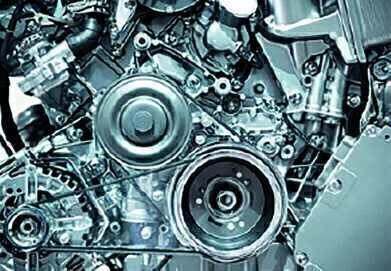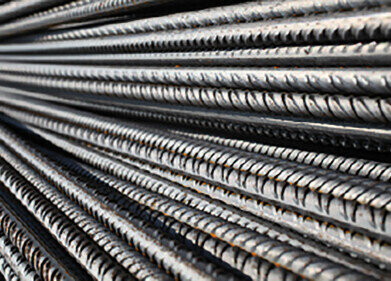Biofuel Industry News
Standards Help Prevent Corrosion
May 01 2023
From energy to automotive, consumer goods, and more, you would be hard-pressed to find any manufacturing sector that does not have to deal with metal corrosion. That’s because every material, everywhere, will eventually break down over time.
Simply put, metal corrosion is the deterioration of any type of refined metal that occurs as a result of a reaction between the material itself and its environment, whether that’s caused by water, oxygen, and/or chemical corrosives. It can be assisted by stress, electricity, or other factors. In practice, corrosion can look like discoloration (e.g., rust), pitting, cracking, or other breakdowns that can lead to significant material loss and structural failure. And it is no small problem. According to estimates from the U.S. Federal Highway Administration, metallic corrosion costs the U.S. alone as much as $276 billion annually, equal to more than 3% of U.S. GDP. Worldwide these figures are in the trillions.
ASTM International’s committee on corrosion of metals (G01) was formed in 1964 to address this issue and currently maintains jurisdiction over some 70 standards that address all aspects important to industries where metal corrosion is a factor. Its purview includes corrosion in computers, environmentally assisted cracking, atmospheric corrosion, the breakdown of nuclear materials, and much more, including a range of testing and reinforcement standards.
“Corrosion touches a lot of different things, but for metals in particular they oxidize, they can degrade in their operating environments, and ultimately, that can lead to failure or degradation that impacts overall performance,” says Dr. Matthew Perricone, committee member and principal investigator and technical consulting group manager at RJ Lee Group, a scientific consulting firm. “The committee is in charge of many different standards that run the gamut from how to test metals that have been made specifically to have certain levels of corrosion resistance in certain environments to diagnosing potential failure modes, and more.”
Manufacturers use these standards to help identify material problems and determine what modes of corrosion may occur in their products or processes. They can offer insights into how fit for service a particular material is and whether it is appropriate for the conditions it will be used in before releasing it to customers, essentially qualifying certain metals for certain uses.
Given the onward march of technology and materials science, the needs of end users are constantly evolving. And, as a nearly 60-year-old committee, G01 has a long list of standards to maintain. Most recently, the committee completed the revision process for standards G111 and G46 (both described below). These two standards had not been updated for nearly 20 years, and had subsequently become less relevant to end users. Led by Dr. Hongwei Wang, managing director, HEMC LLC, two independent revision groups of roughly 30 volunteers worked through the COVID-19 pandemic to deliver updated standards, with plans for further reviews in the works for other standards.
“Given that those two standards had not been updated for almost 20 years, as you can imagine, technology has progressed and end users had probably already jumped to better practice,” Dr. Wang says. “But the standards had somehow been ignored. Of course, some components of these standards are still being referenced from time to time, so we felt it was important to recognize the value of these standards and put some resources behind this revision project to get the job done.”
Including both G111 and G46, some of the most important standards to come out of the committee on corrosion of metals include:
1) Guide for examination and evaluation of pitting corrosion (G46): This standard covers the selection of procedures that can be used in the examination and evaluation of pitted metals. These procedures include both nondestructive and destructive approaches. Since its initial development in September 1992, this standard has become the top reference for pitting corrosion assessment in the research, development, and maintenance of metallic materials. It brings clarity for decision making with increased technology advancements.
2) Guide for corrosion tests in high-temperature or high-pressure environment, or both (G111): Developed in the early 1990s to provide an overarching guide largely driven by oil and gas exploration and production to extreme conditions, this guide covers procedures, specimens, and equipment for conducting laboratory corrosion tests on metallic materials under conditions of high pressure – or the combination of high temperature and high pressure. Its primary users include materials and corrosion engineers and scientists who need to be able to properly conduct tests to drive business decision-making.
3) Standard practice for recording data from atmospheric corrosion tests of metallic-coated steel specimens (G33): Atmospheric testing is an important step in the qualification of metallic-coated steel, helping users determine what types of corrosion are possible and under what conditions. This standard covers a procedure for recording data of atmospheric corrosion tests in order to ensure the complete identification of materials before testing, objective reporting of material appearance during visual inspections, and adequate photographic, micrographic, and chemical laboratory examinations at specific stages of deterioration – and at the ends of the tests.
4) Terminology and acronyms relating to corrosion (G193): Metallic corrosion can occur in a wide range of conditions and applications, so this standard outlines the terminology and acronyms used across other standards, defining commonly used terms and acronyms in the field of corrosion.
5) Test method for corrosion potentials of uncoated reinforcing steel in concrete (C876): Steel is commonly used in concrete applications to reinforce the structure and prevent cracking and damage due to environmental factors. This test method estimates the electrical corrosion potential of uncoated reinforcing steel in concrete so that manufacturers can determine the corrosion potential of the steel used in their applications.
“G46 hadn’t been meaningfully updated in many years, and yet it’s something that everyone uses or references to some extent,” says Perricone. “Technology has advanced, we know a lot more, there are a lot more tools at our disposal than there were years ago. What can we do to bring that new knowledge and expertise to bear for the standards that everyone relies on?”
The work of the committee is continuing, with numerous other standards to be revised and/or written. Anyone who would like to join G01 should contact staff manager Krista Robbins at krobbins@astm.org
Digital Edition
PIN 25.3 June/July
June 2024
Analytical Instrumentation - Recent Advances In Various Bench Scale Accelerated Oxidative Testing Methods For Fuels - Petrochemical Industry: Anton Paar Solutions Streamline Processes, Reduce H...
View all digital editions
Events
Jul 30 2024 Jakarta, Indonesia
Jul 30 2024 Jakarta, Indonesia
China Energy Summit & Exhibition
Jul 31 2024 Beijing, China
Jul 31 2024 Chengdu, China
Aug 05 2024 Moon Township, PA, USA


















